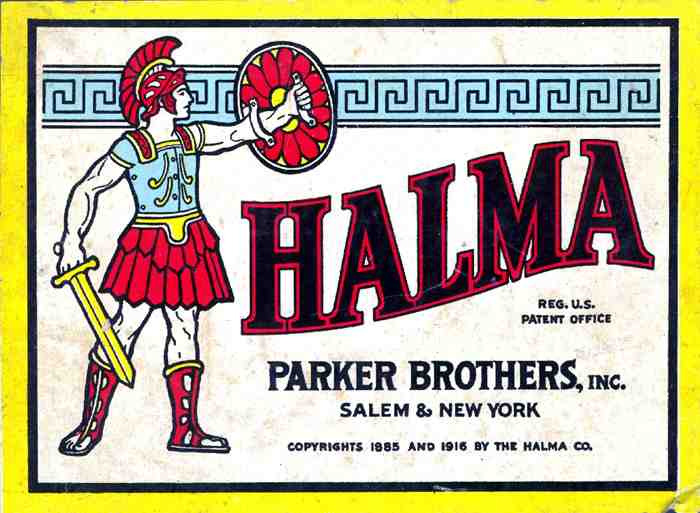|
|
The Rules of Halma
The Equipment
A Halma board consists of 16 x 16 small chequered squares. In each corner, a heavy line delineates 13 squares, which are the starting squares for pieces in the 4 player game. Two opposing corners additionally have another heavy line which delineates the 19 corner squares for the initial position of the pieces in the 2 player game. Pieces are usually flat disks like draughtsmen or upright like the classic pawn in chess. They come in four different colours.
The Preparation
Halma can be played by 2 or 4 players. When 2 players play, 19 pieces are positioned in the appropriate opposing corners in formation 1 - 2 - 3 - 4 - 5 - 4; when 4 players play, 13 pieces are positioned in each corner in formation 1 - 2 - 3 - 4 - 3.
The Objective
The aim of the game is to be the first to player to move all pieces across the board and into opposing corner, within area delineated by the heavy line. Should one or more of the holes in the target area contain a piece belonging to another player, this does not prevent a player from winning. In this case, the game is won when all the available points within the area are occupied.
The Play
A toss of a coin decides who starts. Players take turns to move a single piece of their own colour. In one turn a piece may either be simply moved into an adjacent hole OR it may make one or more hops over other pieces. Where a hopping move is made, each hop must be over an adjacent piece and into a the vacant hole directly beyond it. A hop may be over any coloured piece including the player's own and can proceed in any one of the eight directions. After each hop, the player may either finish or, if possible and desired, continue by hopping over another piece. It does occasionally happen that a player is able to move a piece all the way from the starting corner across the board and into the opposite corner in one turn!
Pieces are never removed from the board. It is permitted to move a piece into any hole on the board including holes in areas belonging to other players but, once a piece has reached the opposite area, it may not be moved out of the area but it may move within the area.
Copyright © 1999 Masters Games. All rights reserved.
 |
The rules are
provided by Masters Traditional Games, an Internet shop
selling games. Quote: "You are welcome to print, copy or pass
these rules on but only in their original form including the copyright
and the information about Masters Traditional Games."
Image from AbstractStrategy.com |
![]()
|
© 2004-2006 Vegard Krog Petersen |
Home
History
Rules
Online
Freeware
Trialware
About
Links

 Chinese Checkers
Chinese Checkers